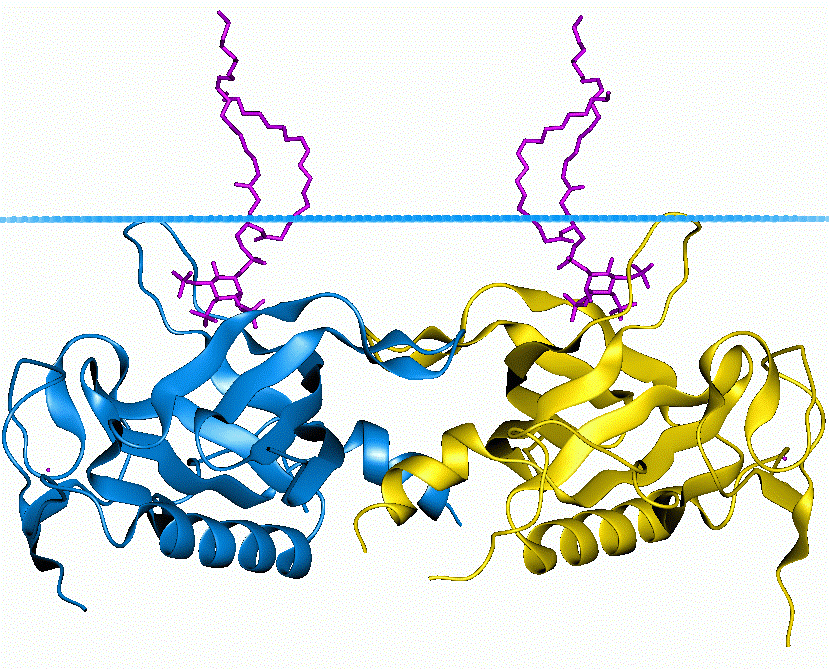Mempro™ Cell-Based PH Domain-Like Protein Production
Creative Biostructure can offer high-quality custom Mempro™ pleckstrin homology (PH) domain-like protein production services using cell-based expression systems. You can count on us all through your projects.
Mempro™ cell-based protein production systems are widely used for numerous proteins production, such as G-protein coupled proteins (GPCRs) and pleckstrin homology (PH) domain-like superfamily proteins. A large amount of signaling proteins possess a kind of small molecular domains (about 120 amino acids) that termed PH domains. It is reported that PH domain-like proteins have a beta-barrel topological structure, moreover, which is capped by an alph helix (Figure 1). The significant characteristics of PH domains is that this specific domains can introduce phosphoinositides phosphorylation at different sites within the inositol ringbind lipid. In other words, PH domains have lipid binding specificity.
 Figure 1. PH domain of tyrosine-protein kinase BTK. (Wikipedia)
Figure 1. PH domain of tyrosine-protein kinase BTK. (Wikipedia)
Creative Biostructure has strong expertise in high-yield PH domain-like proteins production using cell-based membrane protein expression systems, we can provide various strategies for Mempro™ cell-based protein production, including:
- Mempro™ Protein Production in Bacterial Cells System ;
- Mempro™ Protein Production in Yeast Cells System;
- Mempro™ Protein Production in Incest Cells System;
- Mempro™ Protein Production in Mammalian Cells System.
Among Mempro™ cell-based protein production systems, Escherichia coli (E. coli) is the most popularly used bacterial host for the production of PH domain-like proteins, providing numerous options for the optimization of expression conditions. We can perform two principal strategies in E. coli, the expression as soluble membrane proteins inserted into the membrane or as inclusion bodies representing cytoplasmic aggregates. Yeast cells (specifically saccharomyces cerevisiae and pichia pastoris) system, combines prokaryotic as well as eukaryotic characteristics. It is an attractive eukaryotic host owing to single cells, fast growth rates, inexpensive media, high cell densities. Insect cells (such as Sf9 and Sf21) are also a major system for PH domain-like protein expression, which was developed in the early stage that transfected insect cells with vectors (bacmids) derived from the baculovirus species AcMNPV. Mammalian cells present another eukaryotic system for PH domain-like protein expression, which provide the most authentic cell environment. Cell lines derived from COS, CHO, BHK-21, HEK293, HeLa and GH3 are commonly used for protein expression.
With the Mempro™ cell-based protein production platform, Creative Biostructure is capable of expressing, isolating, purifying and crystallizing PH domain-like proteins to facilitate the study of their biological functions. Misfolding, aggregation, inactivity, poor stability and solubility are the common difficulties encountered in integral membrane protein production. However, these issues can be overcome by optimizing factors like expression vectors, host strains, growth conditions, co-expression of helper proteins and fusion tags, etc.
We provide other various Mempro™ membrane protein production services. Please feel free to contact us for a detailed quote.
References:
F. Junge, et al. (2008) Large-scale production of functional membrane proteins. Cellular and molecular life sciences, 65 (11): 1729-1755.
Pleckstrin homology domain. (https://en.wikipedia.org/wiki/Pleckstrin_homology_domain).